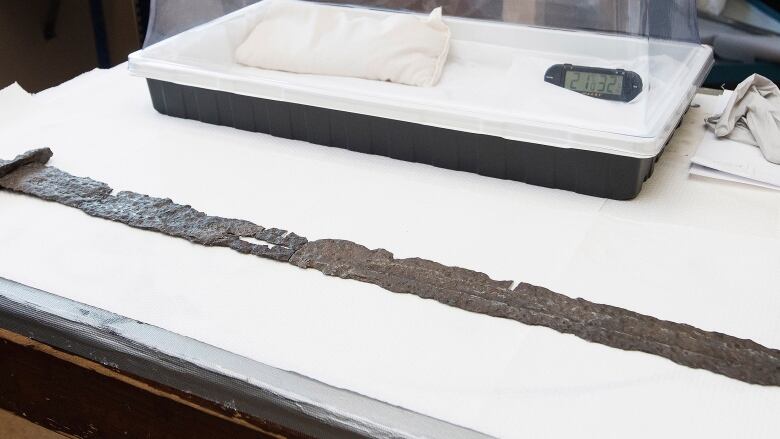How the Royal Ontario Museum believes a Viking sword ended up in northern Ontario
The ROM acquired sword from a man, then living in Port Arthur, Ont., who claimed he found it in Beardmore

While it's extremely unlikely that Vikings ever traversed through or settled in northern Ontario, a new exhibit at the Royal Ontario Museum will feature one of their artifacts that has ties to the region.
The museum's special exhibit on Vikings opens on Nov. 4. One of the items on display will be the so-called "Beardmore Sword," an artifact the museum acquired in the 1930s that, by all accounts, is a legitimate weapon from the Viking age. Its backstory, however, is something of a mystery.
"In 1931, the so-called "Beardmore sword" was reportedly discovered in Thunder Bay, Ontario, alongside several other Norse artifacts. James Edward Dodd claimed he found them while prospecting for gold in the area. The objectsappearto be Norwegian in manufacture with estimated production dates ranging from 850 to 1025. It is now widely accepted that the relics are authentically Norse, but they were planted there in the first quarter or so of the 20th century."
- Text from the label accompanying the sword in the exhibit
The museum was given the weapon by a man named James Edward Dodd, who was living in Port Arthur now part of Thunder Bay but claimed he found the sword, and other artifacts, while prospecting for gold in Beardmore, a town about 200 kilometres northeast of the city.
If that was the case, could Vikings have been in northwestern Ontario? Not likely, according to Craig Cipolla, the curator for the exhibit at the museum.

"[Dodd] could have simply found them in the basement of the house he was renting at the time," Cipolla said, adding that the indebted Norwegian possibly gave the landlord Viking weaponry as payment. Another hole in the story emerged, Cipolla said, when a step-son of Dodd's spoke with museum officials about the artifact.
"He said he remembers when he was about 12 or 13 years-old, his father brought him out to this area in Beardmore and he brought these objects with him from his house," Cipolla said. "He left them there in the landscape and then ... like a year later, he went and brought them back and said 'look, I found Viking objects."

Perhaps surprisingly, stories of "fake Viking finds," aren't uncommon, Cipolla said.
"There's many different cases of North Americans really wanting the Vikings to have been in their area," he said, adding that such hoaxes actually muddy the waters in terms of understanding the continent's early history.
"It's not harmless at all because it misrepresents Viking history in one sense but ... it infringes upon the very deep and complicated and rich Indigenous history of Canada," he said.












_(720p).jpg)


 OFFICIAL HD MUSIC VIDEO.jpg)
.jpg)



























































































